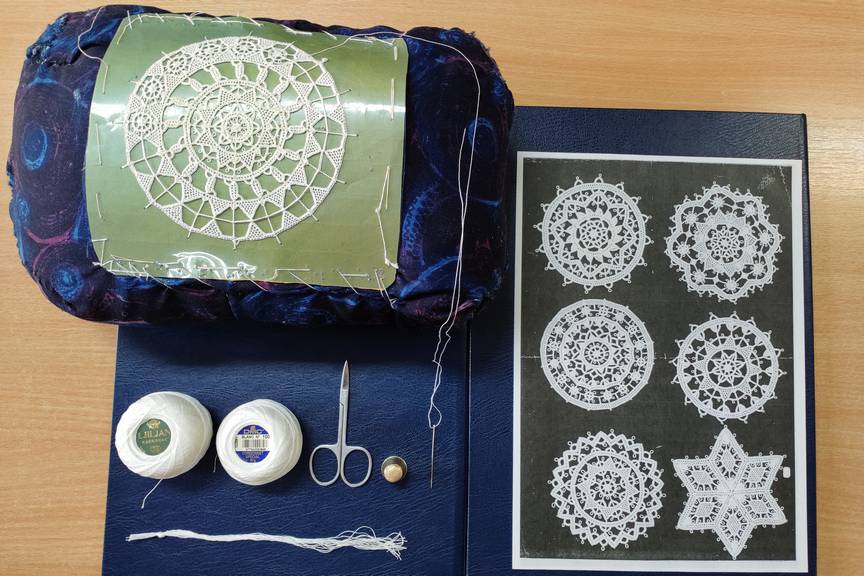Skill and Patience, Foundation Behind Fashion

The history of Pag lace has more than 500 years. In Pag Island, only women of Pag town know the skill way. The income from selling lace was always an important source of family economy.

Tools and Technique Used in Pag Lace

The tools used for lace making are: needle, cotton thread, cardboard and round pillow. Pag lace is made without any drawing, the tenter axis is first sewn directly on a hard paper. All women used the examples of their mother and grandmother. They added personal thoughts and emotions in the work to create a unique style and exquisite hand-made art.

Making lace is a very time-consuming work. It needs a lot of patience and concentration to make delicate and durable lace. Each line in the pattern must repeat the same sewing steps, at least 3 times to increase the thickness of the line. That is why a 5 cm square piece of lace takes more than 10 hours to complete. Usually sewing lace is using 70-gauge cotton thread. For very few and special reasons, 100-gauge cotton thread can be used. Then each line needs to add 2 to 3 more repeating steps. It will take 2 times more to complete. The more complicated the lace pattern is, the longer it takes to make.
The Elements of a Pag Lace


Pag Lace has 31 basic elements. These elements are all the things around us in life and transformed by imagination. For example: river, leaf, almond, rudder, sun, fly… and so on. Pag women combine 31 kinds of elements freely and add their own creativity and emotion to complete a frame of unique lace craft. Each piece contains the mood of the creator. For example, this next lace picture with the number “1961” maybe had a special meaning in this year for someone.
There is another difficulty in sewing lace. A complete lace pattern sewing must start from the central point called Banok (Pogačica). There is no drawing in advance, but a direct tenter on the hard paper. When the maker going to the next pattern. She has to know how to to arrange the position of the next center point. This requires empirical judgment. A good quality lace, in addition to the complete pattern structure, needs an average force applied during sewing, and sufficient number of sewing. Then the work is flat and does not twist. When you hold your finger on the lowest end of the lace, lace keeps upright without soft fall. Lace can be used even after many washing times.
Lace is the ultimate achievement of textile art. It is an independent individual work with patterns and strands sewed with needles and threads. It is different from the embroidery of Chinese culture that stitches the thread on the cloth. At the same time, it can be combined with cloth and used in various cloth accessories. The sewing on lace is like a spider web work. The difference is that the cobweb will damage, and the lace will spread forever.
Future and Hope for the City
Local people of Pag hope that by combining the school’s training courses and the union’s promotion, they will retrieve the historical value of the Pag lace craft, reshape the skills passed down from generation to generation in the village, and by establishing a system of cooperation between civil and government, find a new way of economic industry for the world’s intangible cultural heritage Pag lace, creating a common victory for both culture and economy.
Video
Please check out this video from the Croatia365 youtube channel about Pag lace skill and technique:



